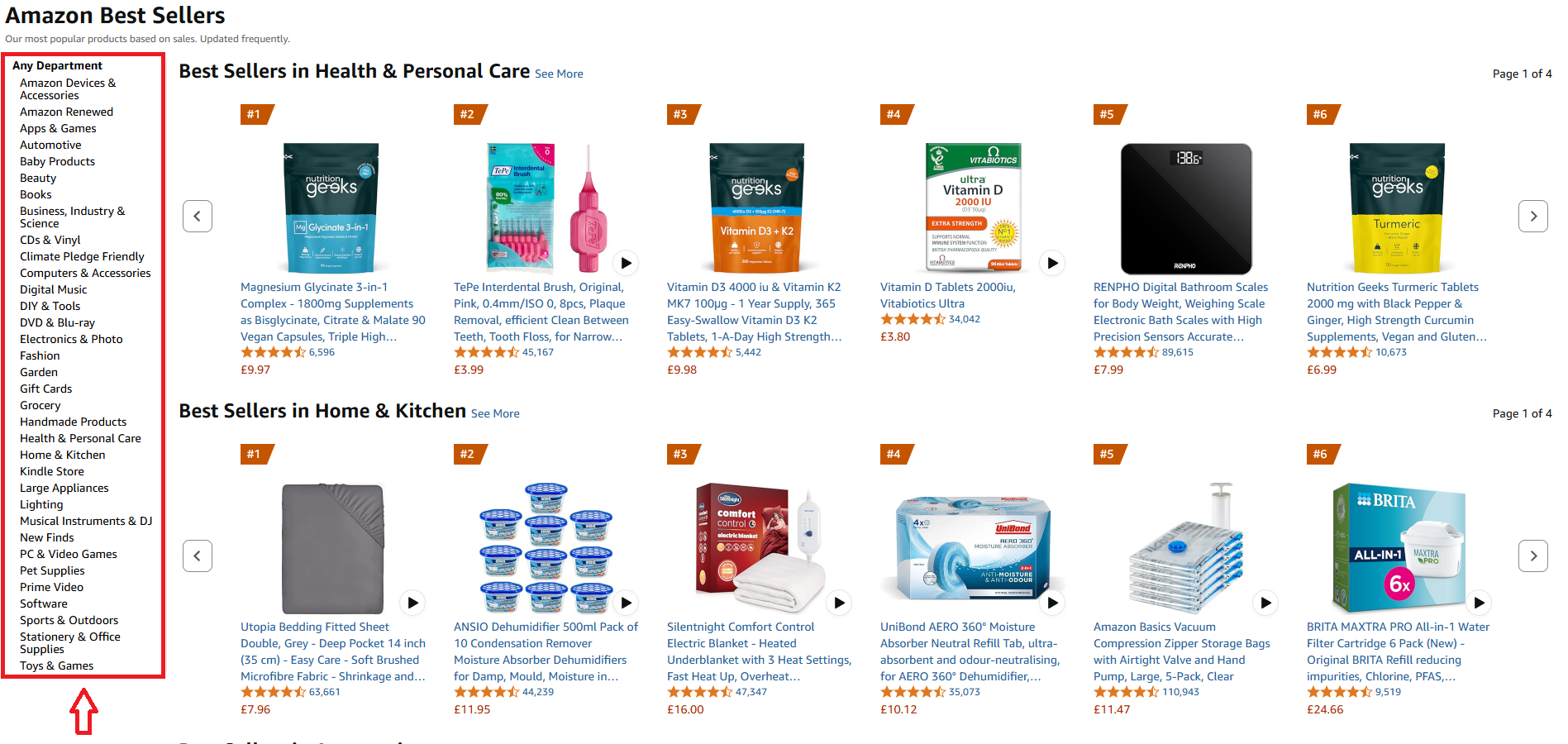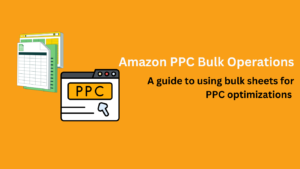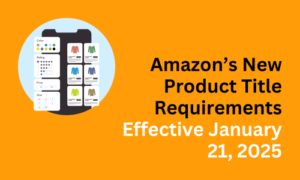How to Use Amazon Best Seller Lists for Product Research: Find Winning Products Fast!
For Amazon sellers, finding winning products is the key to success. The competition is fierce, and every decision you make can significantly impact your profitability. That’s where Amazon’s Best Seller Lists and other tools like Movers & Shakers come into play. As experts in Amazon FBA product research at Active Seller Hub, we’ve refined the process of identifying high-potential products. In this article, we’ll guide you step-by-step on how to use Amazon’s features to uncover the best-selling and most profitable items.
Why Amazon Best Seller Lists Are a Goldmine
Amazon’s Best Seller Lists are a direct reflection of what customers are buying the most. They provide a snapshot of demand across every category and subcategory, from Electronics to Home & Kitchen. By analyzing these lists, sellers can:
 Identify trending products in their niche.
Identify trending products in their niche. Validate product ideas before investing time and money.
Validate product ideas before investing time and money. Spot opportunities for high-demand, low-competition products.
Spot opportunities for high-demand, low-competition products.
Let’s explore how to make the most of this powerful tool.
Step 1: Access the Amazon Best Seller List
Start by navigating to the Amazon website and clicking on the “Best Sellers” link in the top menu bar. This will take you to a page showcasing the top-performing products across all categories.
Pro Tip from Active Seller Hub
Focus on categories relevant to your niche or expertise. For instance, if you specialize in kitchen gadgets, explore the Home & Kitchen section.
Step 2: Choose a Category and Subcategory
Once on the Best Sellers page, select the category of interest, such as Books, Beauty, or Toys & Games. You can then drill down into subcategories to refine your search.


For example:
- In Electronics, you might find trending items like wireless earbuds.
- In Sports & Outdoors, outdoor fitness equipment might dominate the charts.
SEO Keywords to Focus On:
- Amazon product research
- Best-selling products on Amazon
- Top-selling items on Amazon
Step 3: Analyze the Best Sellers
Browse through the list to identify products that align with your goals. Pay attention to:
- Price range: Products priced between $15 and $50 often strike a balance between affordability and profit margin.
- Seller type: Check whether the products are sold by Amazon or third-party sellers.
Pro Tip from Active Seller Hub
Look for products that consistently appear in the top 10. These are proven winners with sustained demand.
Step 4: Explore Movers & Shakers for Trending Products.
The Movers & Shakers section is a hidden gem that highlights products with the fastest-growing sales rank in the past 24 hours.

How to access it:
- Navigate to the Best Sellers page and click on Movers & Shakers in the side menu.
- Or visit directly using this link: Amazon Movers & Shakers.
This feature is ideal for spotting new and trending products before they saturate the market.
SEO Keywords to Focus On:
- Amazon Movers and Shakers
- Trending products on Amazon
- High-demand products on Amazon
Step 5: Analyze Customer Reviews
Customer reviews can provide deep insights into product demand and quality.
- High volumes of positive reviews indicate a popular product.
- Look for customer pain points mentioned in reviews. These can be opportunities for improvement in your product offering.
Pro Tip from Active Seller Hub
We use customer feedback as a roadmap to create better product listings and improve satisfaction rates.
Step 6: Use Sales Rank to Validate Demand
Every product listing includes a sales rank, which indicates its popularity within its category.
- The lower the sales rank, the higher the product’s demand.
- Products ranked within the top 5,000 are often excellent choices for Amazon sellers.
SEO Keywords to Focus On:
- Amazon sales rank
- Analyze Amazon Best Sellers
- Find profitable Amazon products
Step 7: Complement Research with Tools
While Amazon’s Best Seller lists are a great starting point, third-party tools like Helium 10, Jungle Scout, and Algopix can take your research to the next level. These tools provide:
- Estimated sales volume and demand trends.
- Insights into competition, pricing, and fees.
- Profitability analysis, including Amazon FBA fees and shipping costs.
At Active Seller Hub, we leverage advanced tools and techniques to analyze market trends and identify the best opportunities for our clients.
![]() Common Mistakes to Avoid in Amazon Product Research
Common Mistakes to Avoid in Amazon Product Research ![]()
1. Relying Solely on Sales Rank
- While sales rank is a good indicator, it’s not the only metric to consider. Look at reviews, price history, and competition levels.
2. Ignoring Niche Opportunities
- Don’t overlook smaller niches with consistent demand. They often have less competition and higher profit margins.
3. Not Considering Seasonal Trends
- Certain products, like holiday decorations or fitness gear, may only sell well during specific times of the year. Use this knowledge to plan inventory effectively.
How Active Seller Hub Can Help
Product research is the foundation of success on Amazon, but it can be time-consuming and complex. At Active Seller Hub, we specialize in:
- Identifying high-demand, low-competition products.
- Analyzing market trends and customer feedback.
- Optimizing listings to maximize sales and conversions.
Whether you’re launching your first product or scaling your business, our team of Amazon experts is here to guide you every step of the way.
Conclusion
Amazon’s Best Seller Lists, combined with tools like Movers & Shakers (check it out here) and sales rank analysis, offer a treasure trove of data for finding winning products. By following the steps outlined in this guide and partnering with experts like Active Seller Hub, you can confidently select products with high potential for success in the competitive Amazon marketplace.
Don’t just rely on guesswork—use data, insights, and expert advice to build a profitable Amazon business. Start exploring Amazon’s Best Seller Lists today, and let us help you turn your ideas into top-selling products!











